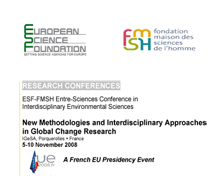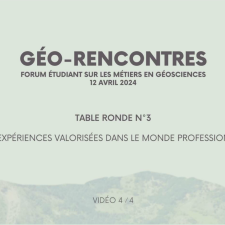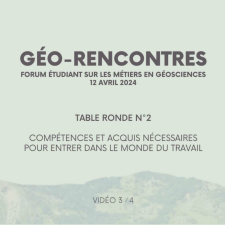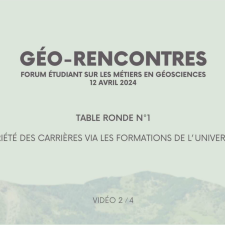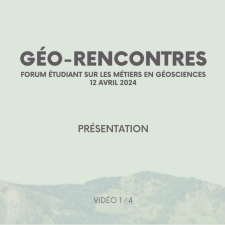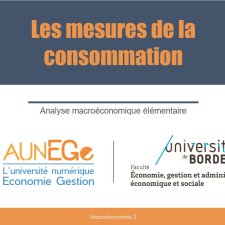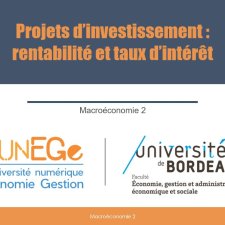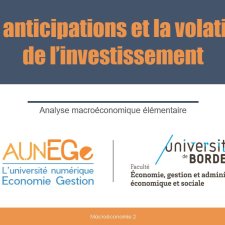Chapitres
Notice
The Effect of Thermal Pollution on Benthic Foraminiferal Assemblages, in the Mediterranean Shore Face Adjacent to Hadera Power Plant (Israël)
- document 1 document 2 document 3
- niveau 1 niveau 2 niveau 3
Descriptif
Over the past several decades public and scientific awareness to global warming has increased significantly. As a result, many studies have examined the affects of global warming. However, the consequences of global warming on marine living organisms at the Levantine basin of the East Mediterranean has not yet been explored. In this study, we have used the thermal pollution of a power plant at the Mediterranean coast of Israel as an analog for the expected future trend of sea surface temperature (SST) rise. We have performed a sequence of 11 sampling campaigns at 5 stations located along a temperature gradient of approximately 10°C, from the discharge site of the heated cooling seawater to a few kilometers south, where temper39 atures are normal. The large natural variations in seawater temperature (16- 30°C) enable us to examine the seasonal impact at relatively extreme conditions, which are intensified during summer, when the temperature anomaly becomes a threat to the environment. Thus, the main objectives of this study were to examine the response of the benthic foraminifera, known as sensitive indicators of environmental changes, to the locally elevated SST and compare it with the response of other groups such as crustaceans, ostracods and mollusks. The SST varied between winter, 27°/18°C and summer, 35°/29°C along the transect. The preliminary results show that the maximal abundance of foraminifera, ostracodes and crustaceans occur in winter while that of the mollusks in summer. The total standing stocks (TSS) of foraminifera are negatively correlated with the SST anomaly. The numerical abundance (per g dry sediment) of the common species is negatively correlated to the temperature gradient in both winter and summer. The species diversity increases as the temperature anomaly decreases and during the winter it is significantly higher than during summer. The assemblage is more even and of lower dominance during winter compared to summer, during which ~80% of the assemblage consisted of only two species. Species richness, in the control station, representing normal sea temperature, varied from 8 to 17, whereas in the warmest station it varied from 3 to 10 species. The variation in species diversity between the five stations indicates that some species have adapted to the elevated temperatures better than others. The preliminary results of this study point towards the conclusion that global warming has a primary negative affect on foraminifera populations and thereby on other marine microorganisms as well.
Intervention / Responsable scientifique
Dans la même collection
-
Holocene Climatic Changes and Their Effect on Morphodynamics and Sedimentation in Campania
AmatoVincenzoHigh-resolution paleoclimatic studies (e.g. 18O, 13C, CH4, MS, ect) provide 38 detailed reconstructions of the Holocene climatic variability, but they don’t are unable to provide direct informations
-
Debate
JoussaumeSylviePlantonSergeGonzales RoucoJesus FelipeGoosseHughesReissellAnniBrasseurGuyThe European Science Foundation (ESF) and the French Foundation of the Maison des Sciences de l’Homme (FMSH) (within the Entre-Sciences programme) have agreed to jointly develop a new conference
-
Linking Adaptation and Mitigation for Climate Risk Reduction
ShogrenJason F.How people privately and collectively adapt to climate risk can affect the costs and benefits of public mitigation policy (e.g., Kyoto); an obvious point often neglected in actual policy making.
-
Social Impact of global Environmental Change on Farming Communities on the Ogoli River Bank in Otuk…
Anjeinu AbuGodwinOne of the manifestations of the global change in this study area is a marked reduction in the duration and amount of rainfall. This adversely affects the volume of the head waters that ultimately
-
International Negociations on Climate Change: How to Take Advantage of Risk Aversion to Improve the…
ThoronSylvieClimate change is one of the best examples of global environmental problems. Countries are conscious that they have to find a solution to this global problem at the international level. Negotiations
-
IPCC Working Group I
SomervilleRichardThe European Science Foundation (ESF) and the French Foundation of the Maison des Sciences de l’Homme (FMSH) (within the Entre-Sciences programme) have agreed to jointly develop a new conference
-
Conference Opening
GuiotJoëlLauberVolkmarThe European Science Foundation (ESF) and the French Foundation of the Maison des Sciences de l’Homme (FMSH) (within the Entre-Sciences programme) have agreed to jointly develop a new conference
-
From Climate Models to Earth System Models
BrasseurGuyComplex climate models that describe the evolution of the coupled ocean atmosphere cryosphere system are gradually extended to “non physical” components of the earth system, and account for land
-
Are European Ecosystems Vulnerable to Climate Change
CramerWolfgangThe relatively simple question posed by this title turns out to be complicated in its implementation, for a number of reasons: First, ecosystems have changed in response to changing climate throughout
-
The Impacts of Climate Change on Continental Ecosystems
SeguinBernardClimate change will deeply modify the ecophysiological functioningof plants, by creating a set of conditions which could be more favourable (in the sense of biomass production) or not. Among the first
-
Interlocking Natural and Social Systems - Resilience, Governance and Research Policy Considerations
SvedinUnoIn this presentation the start is made from the 2007 IPCC statement that it now seems consolidated that there is a clear sign of the importance of the anthropogenic factors in the climate change
-
Carbon Offsetting: An Ethical and Psychological Approach
FragnièreAugustinThe carbon offset market is becoming more and more popular. However, 57 until now few studies have attempted to approach the phenomenon from a social sciences’ perspective. By distinguishing three
Sur le même thème
-
Géo-Rencontres 2024 / Les expériences valorisées dans le monde professionnel
LilloEmmaAraujoJulieHuartFlorianDubreuRomainBuquetDamienChazalLauraBorieMarianeForum sur les métiers en géosciences organisé par les étudiants du CMI Ingénierie Géologique et Civile, Université de Bordeaux, 12 avril 2024
-
Géo-Rencontres 2024 / Compétences et acquis nécessaires pour entrer dans le monde du travail
BrinonJulietteAmoleFili-FenuaPretouFrédéricCampetHugoLiébauxAlbinDe AlemeidaMarie-LouPoirierAymericDufrenoyAudreyForum sur les métiers en géosciences organisé par les étudiants du CMI Ingénierie Géologique et Civile, Université de Bordeaux, 12 avril 2024
-
Géo-Rencontres 2024 / Variété des carrières via les formations de l'université
InguimbertDianeLacazeRomaneLemaitreLaurieChazalLauraMontjeanPascalPoudevigneJacquesPortefaixFrédéricForum sur les métiers en géosciences organisé par les étudiants du CMI Ingénierie Géologique et Civile, Université de Bordeaux, 12 avril 2024
-
Géo-Rencontres 2024 / Présentation
LatasteJean-FrançoisLavieThéoForum sur les métiers en géosciences organisé par les étudiants du CMI Ingénierie Géologique et Civile, Université de Bordeaux, 12 avril 2024
-
Tokyo, plus grande « ville » au monde : aménager et gouverner la démesure
Languillon-AusselRaphaëlAvec ses quelques trente-cinq millions d’habitants, Tokyo est la « ville » la plus peuplée au monde, et l’une des métropoles les plus riches. Cette présentation vise à décrire, analyser et expliquer,
-
-
Projet d'investissement : rentabilité et taux d'intérêt
Maveyraud-TricoireSamuelProjet d'investissement : rentabilité et taux d'intérêt
-
Les anticipations et la volatilité de l'investissement
Maveyraud-TricoireSamuelles anticipations et la volatilité de l'investissement
-
Les fonctions de consommation et d’épargne keynésiennes
Maveyraud-TricoireSamuelLes fonctions de consommation et d’épargne keynésiennes
-
La détermination du PIB à court terme
Maveyraud-TricoireSamuelLa détermination du PIB à court terme
-
Demande en biens et services et fluctuations conjoncturelles
Maveyraud-TricoireSamuelDemande en biens et services et fluctuations conjoncturelles
-


